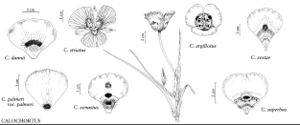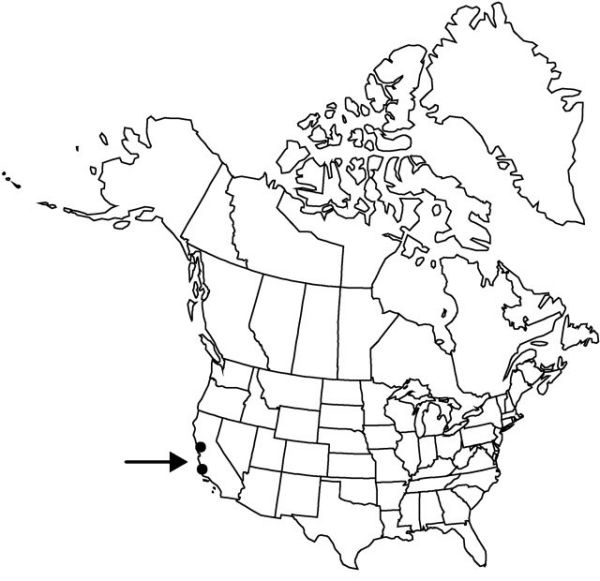Calochortus argillosus
Madroño 39: 306. 1992.
Plants bulbose; bulb coat membranous. Stems not branching, 4–6 dm. Leaves: basal withering, 2–3 dm; blade linear. Inflorescences subumbellate, 1–4-flowers; bracts 2–8 cm. Flowers erect; perianth open, campanulate; sepals lanceolate, 2–4 cm, apex acute to acuminate; petals white to purple, with median red blotch often surrounded by pale-yellow, obovate to cuneate, rounded, 2–4 cm, with a few short hairs near gland, apex retuse to obtuse; glands arched, transversely oblong to weakly lunate or ± rectangular, not depressed, densely covered with short hairs; filaments 7–9 mm; anthers lanceolate-linear to oblong, 8–10 mm, apex acute to obtuse. Capsules erect, narrowly lanceoloid, stout, 4–6 cm. Seeds light beige, lanceolate, flat, 5–6 mm. 2n = 14.
Phenology: Flowering late spring–mid summer.
Habitat: Hard clay soil of volcanic or metamorphic rock
Elevation: 0–400 m
Discussion
Selected References
None.
Lower Taxa
"dm" is not declared as a valid unit of measurement for this property."broad" is not a number."usually longer and broader" is not a number."thicker" is not a number."dm" is not declared as a valid unit of measurement for this property.

